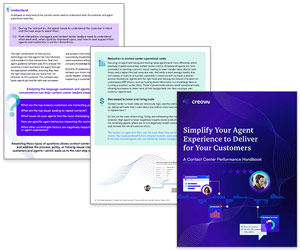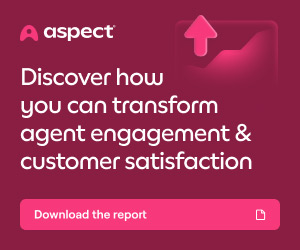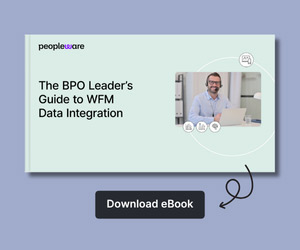Madeline Jacobson at Creovai explores how real-time speech analytics is transforming contact centres, showing leaders how it boosts agent confidence, ensures compliance, and delivers better customer experiences in the moment.
What do your contact centre agents do when a customer stumps them with a question or when they have to complete an unfamiliar process?
Do they place the customer on hold, escalate the call, or use stall tactics? Or-even worse-do they wing it and guess at the right answer or process?
None of those options are great, and all of them negatively impact operational metrics and the customer experience.
These problems-and other common friction points in live customer calls-can be solved with real-time speech analytics: one of the technologies that powers agent assist software.
Real-time speech analytics makes it possible to deliver contextual insights and guidance to agents during customer conversations.
This technology can also trigger intent-based actions, such as pulling up a dynamic checklist based on what the customer is talking about or alerting supervisors when they need to intervene.
Instead of discovering issues after the fact, real-time speech analytics enables contact centres to identify opportunities, address problems, and coach agents in the moment when it matters most.
How it Works
Real-time speech analytics involves a few key components:
- Automatic transcription – Automatic speech recognition technology, which uses machine learning and AI, converts speech to text.
- >Natural language processing – This technology uses machine learning algorithms to analyse and interpret the meaning of text transcripts.
- Keyword and intent detection – Machine learning models come into play again here, analyszing language patterns in the text transcripts and identifying intent, sentiment, and key phrases that can trigger specific actions or alerts.
The entire process occurs within seconds, allowing the system to provide timely guidance while the conversation is still in progress.
The technology works by continuously monitoring both sides of a conversation, agent and customer, and processing each utterance through machine learning models trained to recognize specific scenarios, compliance requirements, and opportunities for intervention.
This creates a system where agents receive instant support, supervisors get real-time visibility into contact centre operations, and customers benefit from more informed, efficient service.
How Contact Centre Leaders Are Using Real-Time Speech Analytics
Real-Time Agent Coaching
Real-time speech analytics can boost agent confidence and performance with in-the-moment coaching prompts.
The system can detect key conversation moments based on utterances (e.g., when customers express objections, confusion, or frustration) and immediately provide agents with proven responses and recommendations.
For cross-sell and upsell opportunities, the technology identifies the best moments to introduce additional products or services based on customer statements and conversation context.
Agents receive coaching prompts that guide them through successful sales techniques, increasing their chances for conversions.
New agents particularly benefit from real-time coaching, as they receive the guidance that typically comes from experienced colleagues or supervisors.
This reduces the learning curve and helps newer team members perform at higher levels much sooner.
Compliance Monitoring and Disclosure Enforcement
Compliance monitoring doesn’t just have to be part of the post-call QA process. Real-time speech analytics software automatically monitors conversations for required disclosures, regulatory language, and compliance adherence.
Dynamic checklists or pop-up prompts can appear on agent screens, ensuring agents don’t miss critical steps during complex interactions.
Real-Time Supervisor Dashboards and Alerts
Supervisors can’t be in every conversation at once – but real-time technology helps them focus on the interactions that most need their attention.
Customizable dashboards can show in-progress conversations and alerts about issues that require immediate attention, such as highly escalated customers, potential compliance issues, or legal threats. This allows supervisors to go where they’re most needed and head off potentially costly issues.
Fraud Detection and Risk Alerts
Real-time speech analytics software excels at identifying potentially fraudulent interactions by analysing conversation patterns, identifying suspicious requests, and flagging unusual behaviours.
When the software detects signs of attempted fraud, agents receive immediate alerts with suggested verification steps and security protocols.
This real-time fraud detection helps protect both customers and the organization while reducing the need for extensive manual review processes.
Sentiment Analysis
Real-time sentiment analysis identifies signs of specific emotions based on what’s being said, helping agents understand when customers are becoming frustrated, angry, or confused.
On-screen pop-ups can alert agents to adjust their approach, escalate to supervisors, or take specific actions to improve the interaction outcome.
Call Summarisation
Automatic call summarization reduces after-call work by generating concise summaries of key conversation points, outcomes, and follow-up requirements.
This not only saves time but also improves handoff quality when customers need to interact with multiple agents or departments.
Immediate and Long-Term Benefits of Real-Time Speech Analytics
The beauty of real-time speech analytics is that it yields both immediate and long-term benefits for contact centres, agents, and customers.
Immediate benefits include:
Error Reduction
By providing real-time alerts and guidance, the technology helps agents avoid common mistakes before they impact customers.
Compliance prompts prevent regulatory violations, while knowledge base suggestions reduce the likelihood of providing incorrect information.
Reduced Agent Stress
When agents have instant access to the information and guidance they need, they feel more confident and capable during challenging interactions. This is particularly valuable for newer agents who may feel overwhelmed by complex customer issues.
Faster Issue Resolution
Real-time insights help agents identify customer needs more quickly and guide them toward appropriate solutions. This reduces average handle time while improving first-call resolution rates.
Consistent Service Delivery
Real-time prompts and coaching ensure that all agents, regardless of experience level, have access to proven best practices and company procedures. This creates a more consistent customer experience across all interactions.
Long-term benefits include:
Increased Operational Efficiency
Over time, the continuous coaching and guidance provided by real-time analytics creates a more skilled and confident agent workforce.
This reduces the need for extensive training programs, speeds up onboarding, and decreases the need for supervisor intervention.
Enhanced Agent Experience
Real-time support reduces interaction complexity and helps agents achieve their performance goals. This improved work environment contributes to reduced turnover rates, a critical factor given that the average contact centre attrition rate is 30-45% annually.
A Better Customer Experience
The combination of better-prepared agents, consistent service delivery, and proactive issue resolution creates measurably better customer experiences.
Customers benefit from faster resolution, more accurate information, and interactions with confident, well-supported agents.
Real-Time vs. Post-Call Speech Analytics
As the name suggests, the primary difference between real-time and post-call speech analytics (also called conversation intelligence) is that the former takes place during customer interactions and the latter takes place after the interaction has wrapped.
Both types of speech analytics serve valuable purposes, and they’re not an either/or choice for contact centre leaders.
Real-time analytics are great for detecting potential problems and opportunities that the agent should act on during the interaction (such as fraud attempts or customer objections).
Post-call analytics are great for evaluating 100% of your interactions, automating manual review processes, and surfacing trends and insights needed for strategic planning and long-term improvements.
| Real-Time Speech Analytics | Post-Call Speech Analytics | |
|---|---|---|
| Timing | During Live Conversations | After Conversations End |
| Primary Purpose | Immediate Intervention and Guidance | Strategic Improvement Based on Insights |
| Agent Support | Real-Time Coaching Alerts | Data-Baked Coaching Sessions |
| Compliance | Prevents Violations in Progress | Identifies Violations Retroactively |
| Data Scope | Individual Conversation Focus | Aggregate Patterns and Trends |
| CX | Improves Current Interactions | Informs Future Improvements |
Real-Time and Post-Call Speech Analytics Are Better Together
The most successful contact centres don’t choose between real-time and post-call analytics, they use both technologies in complementary ways to maximize their impact.
Post-call conversation intelligence identifies successful agent behaviours, effective sales techniques, and common customer pain points through comprehensive analysis of interaction data.
You can use these insights to inform real-time prompts, coaching scripts, and alert triggers that guide agents during future conversations.
For example, if post-call analysis reveals that agents who use specific language when handling billing disputes achieve higher customer satisfaction scores, this insight can be built into real-time coaching prompts.
When similar billing conversations occur, agents automatically receive guidance on the most effective language to use.
Post-call analytics can also measure agent adherence to real-time prompts and coaching suggestions, creating a feedback loop that continuously improves the effectiveness of real-time guidance.
This integrated approach (which we call intelligent guidance) enables contact centres to not only identify what works best but also ensure that best practices are consistently applied during customer interactions.
As customer expectations continue to rise and the war for talent intensifies, contact centres that invest in real-time and post-call speech analytics will be best positioned to deliver exceptional experiences while building sustainable, efficient operations that benefit everyone involved.
This blog post has been re-published by kind permission of Creovai – View the Original Article
For more information about Creovai - visit the Creovai Website
Call Centre Helper is not responsible for the content of these guest blog posts. The opinions expressed in this article are those of the author, and do not necessarily reflect those of Call Centre Helper.
Author: Creovai
Reviewed by: Rachael Trickey
Published On: 10th Oct 2025
Read more about - Guest Blogs, Creovai






 Creovai exists to improve customer and agent experiences through powerful software solutions, purpose-built for the modern contact center. We believe customers shouldn’t dread reaching out for assistance—and agents shouldn’t dread handling complex customer interactions. Our Intelligence and Guidance technology equips contact centres with conversation insights that improves their ability to make decisions, elevates service standards, and provides real-time guidance to help agents assist customers with ease. Visit Creovai's website for more information on how we can help you deliver contact centre excellence.
Creovai exists to improve customer and agent experiences through powerful software solutions, purpose-built for the modern contact center. We believe customers shouldn’t dread reaching out for assistance—and agents shouldn’t dread handling complex customer interactions. Our Intelligence and Guidance technology equips contact centres with conversation insights that improves their ability to make decisions, elevates service standards, and provides real-time guidance to help agents assist customers with ease. Visit Creovai's website for more information on how we can help you deliver contact centre excellence. 































